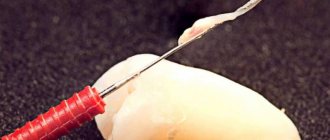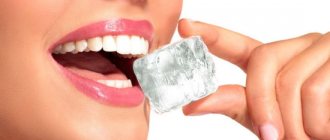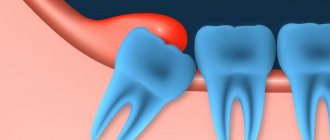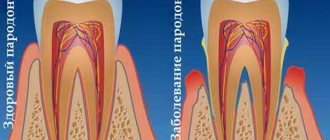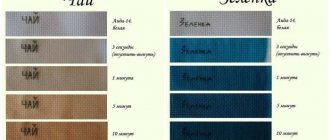Removing an old tooth filling is a dental procedure that aims to completely remove it. The need for it may arise due to destruction or cracking of the material. It is also used if inflammation of the pulp, periodontal tissue, or caries is detected under the filling. The latter can penetrate through its microcracks or the space that appears due to its separation from the tooth wall. For this reason, it is optimal to change fillings at least every five years. Dentists often recommend placing new fillings when treating even those dental diseases that are not related to previously placed fillings.
Removing old fillings and installing new ones in their place is one of the services available at the CELT dental department in Moscow. Our multidisciplinary clinic has been operating in the capital's paid medical services market for almost three decades and has a modern diagnostic base. The Department of Dentistry has all the necessary licenses and certificates. Treatment of patients is carried out on the basis of a formal contract with guarantees. You can find out the cost of filling removal by going to the “Services and Prices” tab, however, to avoid misunderstandings, we recommend checking it with the operator of our information line or during a consultation with a doctor.
Consultation with a dentist-therapist - 1,000 rubles.
Removal of an old filling - 300 rubles.
At CELT you can get advice from a dental specialist.
- The cost of a consultation with a dentist-therapist is 1,000
Make an appointment
Indications for removing old fillings
Any filling has a service life, and then it must be replaced. On average, it is about five years, after which it shrinks, loses its properties and is no longer able to provide the proper level of tightness. As a result, bacteria penetrate into the dental cavity, causing secondary caries and other dental diseases. If treatment is not carried out promptly, you can lose the entire tooth. Sometimes an old filling does not loosen and the tooth underneath does not hurt, but disruption of its shape negatively affects the bite. Small fragments of food fall into the resulting cracks and, lingering there, begin to decompose, which leads to irritation of the interdental papilla and inflammation of the mucous tissues. Other indications for removal:
- Improperly performed root canal treatment, after which carious areas remain in them and secondary caries develops under the filling;
- Injury to the gums by a sagging filling and its inflammation, which is accompanied by the formation of a periodontal pocket, the development of caries and periodontitis;
- Darkening of the filling material, its chipping and loss of aesthetics by the filling, which spoil the patient’s smile;
- The material, even a recently installed filling, does not adhere well enough to the walls of the tooth;
- The need for treatment or retreatment of root canals in a filled tooth.
When we talk about removing a temporary filling, we are talking about removing material that was placed only for a short period of time and is therefore not strong enough. This approach is most often practiced when:
- removal of the nerve to evaluate the effectiveness of treatment;
- removal of the nerve to evaluate the effectiveness of treatment;
- treatment of purulent inflammatory processes of the pulp;
- individual production of inlays for restoration.
After a certain period of time, the dentist removes the temporary filling and replaces it with a permanent one.
When can you not perform the procedure at home?
Strictly speaking, arsenic paste should only be removed in a dental clinic. Carrying out this manipulation without the participation of a doctor can lead to undesirable consequences. The most likely problems that may arise during the arsenic extraction process include:
- injury to the gums with a needle or tweezers;
- infection in damaged soft tissues;
- violation of the integrity of the extracted piece of paste, as a result of which particles of a toxic substance, together with saliva, enter the gastrointestinal tract and cause various damage to internal organs.
To avoid having to remove arsenic at home, certain rules should be followed. To avoid destruction of the temporary filling, food should be chewed on the healthy side. It is not recommended to plan long trips while arsenic paste is in the tooth. Experts urge patients to treat their recommendations with maximum responsibility; only strict adherence to them will help prevent dangerous consequences.
What determines the service life of a filling?
As already mentioned, the average lifespan of a filling is about five years, but it is optimal to determine it individually, since it depends on a number of factors:
- Properties and characteristics of the filling material that was used;
- The dentist’s compliance with technological processes during installation;
- The condition of the unit being sealed (the degree of its destruction, the thickness of the walls);
- Hygienic measures of the oral cavity (regularity and correctness of their implementation, brushes and pastes used by the patient);
- Regular consumption of hard foods and sugar.
There are cases when, provided they are installed correctly and provided with good care, fillings can serve patients well for more than ten years.
Filling using the Tsivinsky method
In this article we will look at how to make a dental filling at home, give examples of the correct process for installing it, and also mention the basics of caries prevention after the procedure.
So, you have decided to carry out a complex procedure yourself at home. The first question that confronts us is: “What material should be used?”
Back in the distant eighties, the famous doctor and scientist Stanislav Tsivinsky filed a patent for a technique that allows filling a tooth reliably, permanently and painlessly. In his opinion, in this process it is quite possible to do without a drill and, accordingly, damage to healthy tissue around the carious cavity.
Refusal of drilling allows you to significantly speed up the process of tooth restoration, as well as make this event completely painless.
The drug Santedents is intended for filling teeth at home.
Created by Tsivinsky, the unique drug Santedents consists exclusively of biologically compatible and hypoallergenic components that adhere perfectly to the tooth surface. The drug is based on ceramic powder; other components of the composition remain secret.
Symptoms to look out for if you have fillings in your mouth
Dentists identify a number of symptoms that indicate the need to seek professional help. Removal of the filling followed by tooth treatment may be required if the patient notes:
- Reactions of teeth to cold or hot food;
- Darkening of tooth enamel or filling;
- Bleeding gums during hygiene procedures;
- Their inflammation or change in color;
- Mobility of the filling or fragments breaking off from it.
Due to the fact that during a routine dental examination it is not possible to identify caries under a filling, the patient is prescribed a visiography. It will provide an image of the affected unit, which allows the development of caries to be determined.
Features of removing old fillings
The algorithm for carrying out this procedure depends on whether there really is a carious lesion under the filling, and on its degree. If it is not significant, the old filling is removed using a bur, and then treatment begins. It involves removing hard tissues affected by the disease, treating the cavity with disinfectants and installing a new filling with subsequent grinding of its surface. Not only the durability of the filling, but also the health of the tooth depends on how correctly all this work was carried out.
A high-quality filling corresponds to the anatomical contours of the latter, matches it in color and fits tightly to its walls. The patient does not feel its presence in the oral cavity even when he runs his tongue over it. If the filling was installed relatively recently and a small fragment breaks off from it, the dentist makes up for it by additionally applying filling material. Features of complete removal of old fillings are determined depending on the material from which they are made.
How are dental cement fillings removed?
This material is the most difficult to remove due to its high strength. The process uses a spherical bur, the tip of which has a rotating head, and starts it at slow speeds. For this reason, this procedure takes longer.
How are fillings made from pasty materials removed?
To do this, use special solvents or drills with extended attachments. If a filling is removed from the root canal, the patient is sent for a visiography: its image allows us to determine the depth of the anatomical structure.
How are amalgam fillings removed?
To remove fillings made of metal alloys, an incision in the form of a cross is initially made on them. After this, the dentist carefully removes their particles from the tooth cavity using a special metal cutter.
How are fillings made from composite materials removed?
These materials are highly durable and therefore require a special approach when removing. The dentist has to use a ball-shaped bur with a rotating head on the tip, which he runs at the slowest speed, carefully drilling out the material.
Installing a new filling
After all treatment measures are completed, the dentist begins installing a new filling. Filling itself is a technique that is aimed at filling a dental cavity in order to restore the unit and ensure its effective protection from infection. The process uses different types of materials: from dental cements to ceramics, composites and amalgam. Their choice is made on an individual basis, taking into account the individual indications and wishes of the patient. The technique for installing a new filling is determined by the material chosen for it.
Installation of fillings made of chemically cured composite materials
The difference between chemical composites and other materials is that they harden due to a chemical reaction that is started when their components are mixed. Their high strength characteristics, on the one hand, are an advantage, but on the other hand, they are a disadvantage. Due to the fact that they are higher than those of native dental tissues, the latter begin to wear out and collapse. As for the advantages, they are:
- affordable cost;
- long service life;
- the presence of fluorine in the composition;
- high speed of creation of restoration;
- uniform hardening;
- immunity to moisture;
- Possibility of use on molars.
Stages of installing new fillings made from chemically cured materials:
- Preparation (removal of carious tissues and sanitation of the oral cavity);
- Etching and drying of dental cavities;
- Application of filling material and its uniform distribution;
- Surface grinding and polishing.
Installation of fillings made of light-curing composites
This material is well suited for small restorations of anterior teeth. Unlike chemical composites, it does not darken during use, and therefore retains its aesthetics. In addition, it hardens under the influence of ultraviolet rays of a special lamp. Thanks to this, the dentist can give the filling an exact shape and achieve a tight fit to the tooth walls. Other advantages of light-curing composite include:
- Possibility to choose the color of the material that matches the color of the native enamel;
- Excellent cosmetic result and invisible restoration;
- Minimum amount of preparation and elimination of discomfort;
- Restoring the unit's functionality to full extent.
Stages of installing a filling made from a light-curing composite:
- Preparation (removal of carious tissues and sanitation of the oral cavity);
- Selection of shade according to the “Vita” scale to match the color of tooth enamel;
- Etching and drying the cavity;
- Applying the filling material in layers with uniform distribution;
- Exposure to ultraviolet rays for 20 - 40 seconds;
- Grinding and polishing the surface of the filling;
- Applying varnish for protection.
Installation of glass ionomer cement fillings
Fillings made from this material are installed on small cavities that appear after treatment of superficial or medium caries. They are quite durable, but at the same time they are inexpensive and have good aesthetic properties. They harden through a chemical reaction initiated when their components are mixed, and can last up to ten years with proper care. Other benefits:
- High speed of filling production;
- Easy to install;
- Uniform hardening of the material;
- Minimum shrinkage during operation;
- Eliminates the risk of cracking.
Despite the simplicity of the technology, it is important for the dentist to follow all its stages, eliminating any inaccuracies:
- Treatment of the cavity with polyacrylic acid;
- Mixing the composition;
- Isolation of the area from moisture;
- Application of the material and its initial hardening;
- Application of varnish that protects against moisture;
- Polishing one day after application.
Why might you need to extract arsenic yourself?
Arsenic paste has a high toxicity rate. It needs to be taken out in time. If it remains in the tooth for more than a week, inflammation of the soft dental tissues and other negative processes develop, which include:
- swelling of the pulp;
- darkening of dentin;
- drug-induced periodontitis;
- death of the periosteum and bone;
- necrotic effect on adjacent teeth.
It is necessary to keep the substance for the prescribed time and not violate the terms of its withdrawal. Just in case, you need to know how to remove arsenic from a tooth yourself. With prolonged exposure to the paste, complete intoxication of the body can occur. And also negative phenomena can occur with an incorrectly calculated dose.
Due to such a high risk of adverse reactions, the drug is used very rarely, although it used to be quite common.
The patient should be attentive to the timing of use of arsenic paste and do not forget to visit a doctor. You need to know when to get the pasta. Despite its necrotic and analgesic effect, the substance located in the tooth can cause pain, which also requires its immediate removal.
A tooth with arsenic hurts - it needs to be removed
The causes of pain are the following:
- the substance does not kill nerve endings, since it is not concentrated enough;
- long duration of action of certain drugs;
- inflammation of tooth tissue;
- necrosis in the area of the periosteum or jawbone;
- substance intolerance;
- incorrectly inserted paste.
Any of these reasons causes pain, which should alert the patient and remove the substance. You need to immediately consult a doctor or, at first, get the paste yourself. When a person removes a substance himself, he must understand that subsequent treatment cannot be avoided.
Reviews about our doctors
I would like to express my gratitude to the dentist Elena Nikolaevna Kiseleva and her assistant Svetlana - they are real specialists and at the same time sensitive, not burnt out by years of practice.
Thanks to them, I have been coming back here for many years. Thanks to the management for such doctors! Read full review Svetlana Nikolaevna
13.08.2021
Words cannot express my gratitude to Elena Nikolaevna Kiseleva. This is the best doctor in the world. I got an appointment after many years of being ignored by the dentist’s office and with a bitter experience of treatment in another paid clinic, the mistakes of which had to be corrected in the first visits. Thank you for this... Read full review
Roman Stanislavovich Sh
25.07.2020
What to do if a tooth hurts after filling?
There is no need to endure pain symptoms under a filled tooth. At home, you can temporarily use regular pharmaceutical products. However, if this does not help, especially at night, you should immediately go to the doctor and take out the paste. Sometimes the pain increases to an unbearable degree. This is possible in the following cases:
- insufficient dosage or the presence of a high threshold of sensitivity to the drug in a person;
- the duration of the period of exposure of the substance to the nerve, when the pain subsides only by the third day;
- the drug inflames the soft tissue, which is accompanied by swelling, and the temperature may rise; you should urgently consult a doctor and get the paste;
- the occurrence of inflammation in any part of the tooth is a serious problem that requires long-term and expensive treatment;
- if you are intolerant to one of the components of the paste or arsenic, when allergic swelling or other dangerous reactions occur, for example, a shock effect, if symptoms increase, immediately call an ambulance;
- incorrect installation of the drug.



